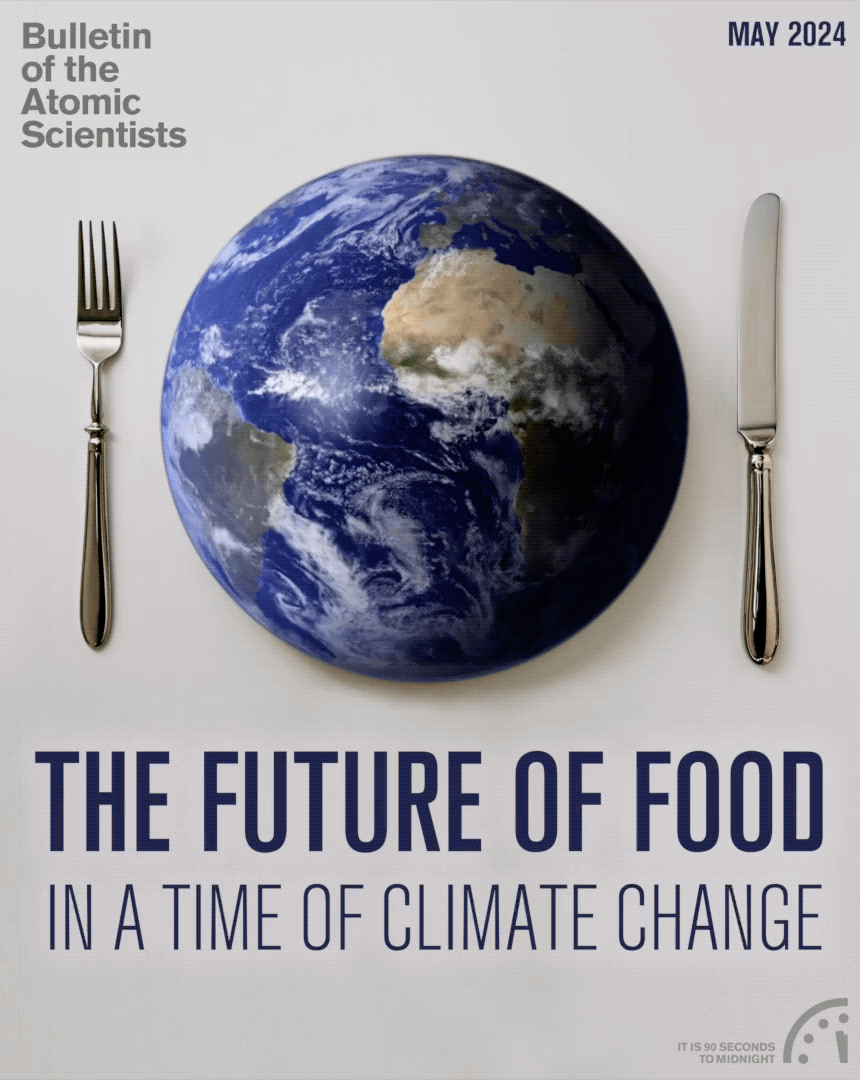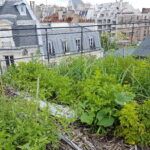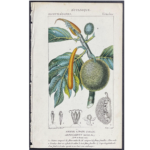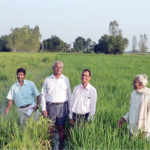Introduction: Bringing the world’s food production in line with global climate goals
By Dan Drollette Jr | May 7, 2024
Introduction: Bringing the world’s food production in line with global climate goals
By Dan Drollette Jr | May 7, 2024
Food systems—how we grow, transport, prepare, and dispose of the food we eat—are responsible for roughly one-third of all global greenhouse gas emissions. And those gases are changing the climate, which in turn is disrupting the food supply. It would seem to be a classic vicious circle.
To compound the problem, the intertwined fates of food and climate change have taken remarkably long to be recognized: It was only last December that the UN’s Food and Agriculture Organization unveiled its non-binding “food systems roadmap” for bringing the world’s food production in line with global climate goals. Why it took so long for food to be “on the table” at international conferences about climate change is something that Emile Frison delves into for this special issue of the Bulletin of the Atomic Scientists. In his article “We cannot afford another lost year for food and climate action,” Frison says that part of the problem so far has been imagery: “When we think of climate change … [w]hat we almost certainly don’t think of is the burger sitting juicy on the dinner plate, the cow in the barn, or the ready-made lasagna steaming fresh from the microwave.”
Along similar lines, an interview with food systems expert Catherine Bertini focuses on the difficulties of reconciling the United Nations’ twin (and perhaps not entirely compatible) goals of eliminating global hunger and stabilizing global climate. But while the problems involved in creating more sustainable food systems may have taken a long time to be recognized and be large in size, they are not insurmountable. In fact, there are many approaches to solving them.
One is to use the latest in high-tech genetic editing tools to make crops with increased yields, greater resiliency to extreme weather, and more resistance to the new diseases introduced as formerly temperate zones become warmer and the reach of what were formerly exclusively tropical pests and diseases expands. “Appropriately enough in the Century of Biology, that means turning to genetic tools such as CRISPR,” write the authors of “We need to act now to ensure global food security and reduce agricultural greenhouse gas emissions.”
A whole other tack involves looking to the past and bringing back some traditional, indigenous food sources—many of which are extraordinarily well-suited to the Global South but over time fell by the agricultural wayside. In “What if potatoes grew on trees,” Diane Ragone, founder of Hawaii’s Breadfruit Institute, describes the organization’s successful effort to bring back the low-cost, sustainable, locally grown foodstuff known as breadfruit. She highlights the importance of several projects, years in the making, to interview people across the Pacific Islands about their traditional cultural practices regarding this food’s planting, cultivating, harvesting, and storing—and to document their knowledge in photographs, recordings, and videotapes.
This type of holistic approach is also a key part of what has come to be known as “regenerative agriculture,” which deals with not just food production but also with how agricultural practices can enrich the soil and the environment. In “Regenerative agriculture sequesters carbon—but that’s not the only benefit and shouldn’t be the only goal,” Jessica Villat, a researcher affiliated with the Harvard University Extension School, explains how practices aimed at better sequestering carbon—including the planting of cover crops, using non-chemical fertilizers, applying integrated pest management, and not tilling cropland—can succeed. Not only that; these practices go to the heart of efforts to increase biodiversity, better control wildfire, and improve water quality and availability, as well.
Human society faces tremendous challenges in remaking its food system in an age of climate change, but it has some powerful tools at hand and a number of different approaches to take in possibly transforming a vicious circle into a virtuous cycle.
Together, we make the world safer.
The Bulletin elevates expert voices above the noise. But as an independent nonprofit organization, our operations depend on the support of readers like you. Help us continue to deliver quality journalism that holds leaders accountable. Your support of our work at any level is important. In return, we promise our coverage will be understandable, influential, vigilant, solution-oriented, and fair-minded. Together we can make a difference.
Keywords: agriculture, agroforestry, biodiversity, climate change, farming, food, food security, regenerative agriculture, urban agriculture
Topics: Climate Change, Special Topics





















